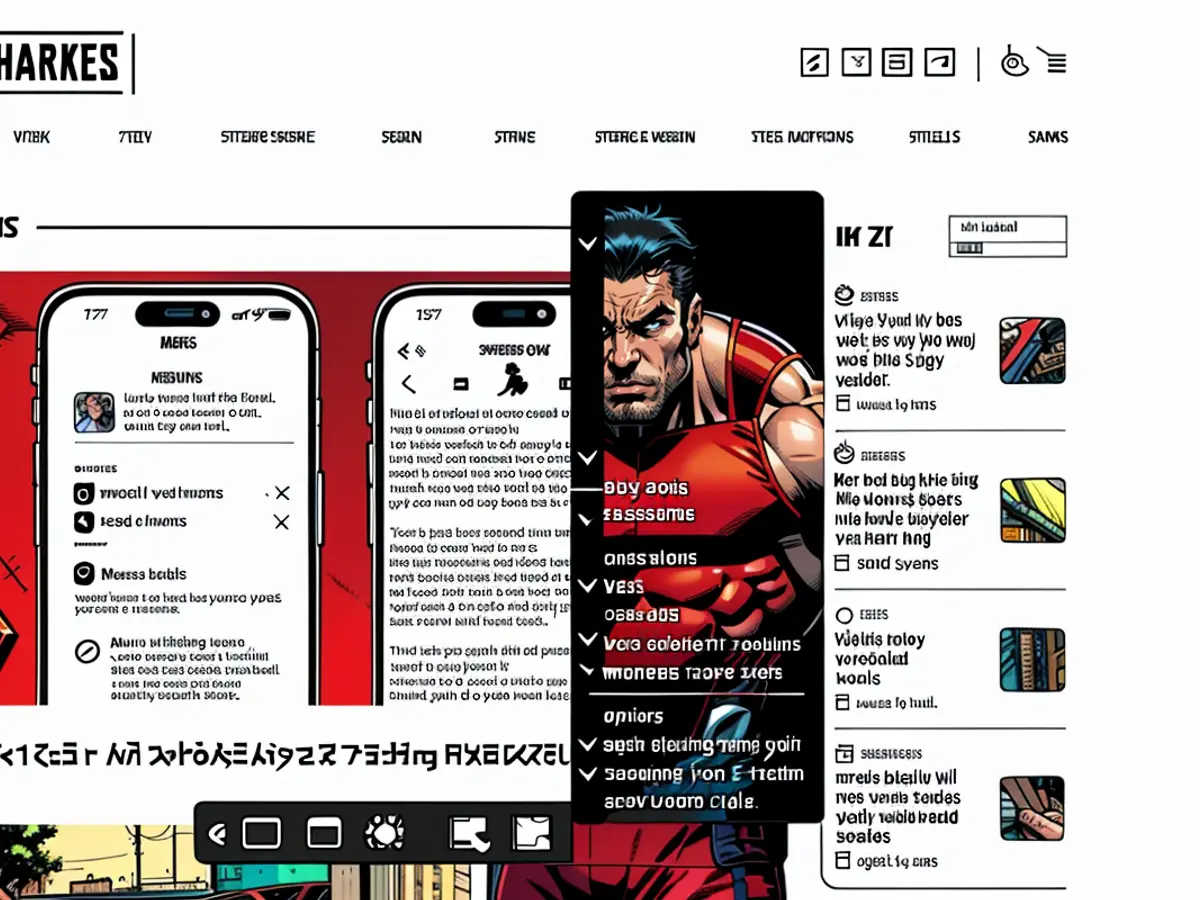Capturing a Screenshot on a Mac: Guidance Provided
The snapped or recorded feature on your Mac allows you to grab or record whatever appears on your screen, be it an individual image, a specific window, or a video tutorial. This tutorial walks you through various methods of utilizing and personalizing your Mac's inbuilt snap function.
Utilize basic snap shortcuts
Your Mac is provided with several key combinations for swiftly capturing screenshots. To capture the entire screen, press Command + Shift + 3. To capture a specific section, use Command + Shift + 4, then click and drag to select the area, and release to capture the image. Pressing and holding the Spacebar while clicking and dragging will let you move the selection around your screen.
Using Command + Shift + 4 + Spacebar allows you to capture a specific window or menu. The pointer will transform into a camera icon, enabling you to click the desired window. Pressing and holding the Option key while clicking will help exclude any drop-shadow effect.
Open the snap toolbar
Alternatively, you can launch the Mac snap toolbar to take screenshots and modify various capturing settings. Use the shortcut Command + Shift + 5. This will display a floating window enabling you to choose from three snap types (Entire Screen, Selected Portion, Selected Window) and two screen recording options (Entire Screen, Selected Portion). Additionally, the Options menu can be accessed to gain more control over how screenshots are captured and handled.

Credit: Emily Long
Credit: Emily Long## Employ a third-party snap app
Although the Mac's built-in snap tool is reasonably good, it lacks essential features like scrolling snapshots, text extraction from images, and advanced editing tools. To overcome these limitations, you might consider replacing the built-in tool with a third-party app such as Shottr (free) or Cleanshot X ($29 for initial license).
Credit: Pranay Parab## How to record screen on Mac
The Mac snap tool includes a recording feature, allowing you to record your entire screen or just a portion. Use the Command + Shift + 5 shortcut to open the tool and select Record Entire Screen or Record Selected Portion from the middle section of the floating toolbar. Once ready, hit the Record button. To halt the recording, reopen the snap tool (Command + Shift + 5) and click Stop Recording or use the Command + Control + Esc shortcut. You may also choose the audio input for your recording from the Options > Microphone menu.
Alternatively, access the recording function through the QuickTime Player app by selecting File > New Screen Recording. The basic built-in recorder can be supplemented with the help of QuickRecorder, a more customizable recording app.

Credit: Pranay Parab
Credit: Pranay Parab## How to set a snap timer on Mac
If some extra time is required to set up your screen before capturing a snap, a snap timer can be set up in the capture tool. Press Command + Shift + 5 to open the capture tool, then select the Options button on the floating menu. (If options are not visible, ensure a snap method is selected.)
Under Options, you can configure your Timer settings between "Off," "5 Seconds," and "10 Seconds." If a 5 or 10-second delay is chosen, a countdown will display in the floating menu. Additionally, you can choose to use a timer just for this capture or as a default by checking or unchecking Remember Last Selection in the Options menu.
Where snapshots are saved on Mac
Mac snapshots are saved to the desktop by default. While this may suffice for occasional snaps, frequent snap use can result in a cluttered desktop, making manual relocation tedious. To avoid the mess, you can change the snap location to avoid the frustration.

Credit: Pranay Parab
An alternative solution for snapshots easily used is saving them to your clipboard and pasting them directly into the app, such as Messages or your photo editor. Use the Command + Control + Shift + 3 (entire screen) or Command + Control + Shift + 4 (select part of the screen) keyboard shortcuts to save the snap to your clipboard. Then use Command + V to paste it.
If snapshots are to be saved for future reference, you can change their storing location. Utilize the Command + Shift + 5 keyboard shortcut and click Options in the floating snap menu. Select any folder or location from the Save to section or use the Other Location option to choose one not listed.
Credit: Pranay Parab## How to make the mouse cursor visible in Mac snapshots
There may be instances when you wish the mouse cursor to be visible in a snapshot for easy pointing to certain areas on the screen. Mac hides this by default, but the useful Options menu in the capture tool offers customization options. Use your Command + Shift + 5 keyboard shortcut, then click Options in the floating snap toolbar. Uncheck the Show Mouse Pointer option at the very bottom of the menu if you want to hide the cursor in the future.
For further snap tips on other platforms, review our other guides:

Credit: Pranay Parab
- Taking Snaps on an iPhone: A Step-by-Step Guide
- Various Methods to Capture Screenshots on Windows Devices
- Multiple Strategies for Snapping Shots on Android Phones
To learn how to take a screenshot on a Mac using the tech-savvy method of 'Command + Shift + 3', refer to this tutorial.
This comprehensive guide also covers how to utilize different capture methods and personalize your Mac's built-in snap function, ensuring that you get the most out of your tech experience.








